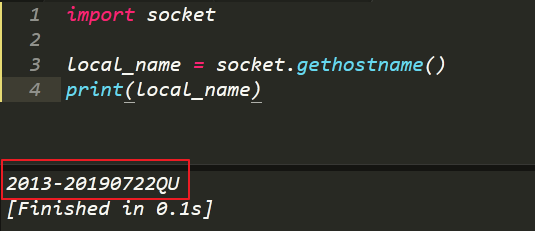深入理解Python中各种方法的运作原理
方法在Python中是如何工作的
方法就是一个函数,它作为一个类属性而存在,你可以用如下方式来声明、访问一个函数:
>>> class Pizza(object): ... def __init__(self, size): ... self.size = size ... def get_size(self): ... return self.size ... >>> Pizza.get_size <unbound method Pizza.get_size>
Python在告诉你,属性_get_size是类Pizza的一个未绑定方法。这是什么意思呢?很快我们就会知道答案:
>>> Pizza.get_size() Traceback (most recent call last): File "<stdin>", line 1, in <module> TypeError: unbound method get_size() must be called with Pizza instance as first argument (got nothing instead)
我们不能这么调用,因为它还没有绑定到Pizza类的任何实例上,它需要一个实例作为第一个参数传递进去(Python2必须是该类的实例,Python3中可以是任何东西),尝试一下:
>>> Pizza.get_size(Pizza(42))
太棒了,现在用一个实例作为它的的第一个参数来调用,整个世界都清静了,如果我说这种调用方式还不是最方便的,你也会这么认为的;没错,现在每次调用这个方法的时候我们都不得不引用这个类,如果不知道哪个类是我们的对象,长期看来这种方式是行不通的。
那么Python为我们做了什么呢,它绑定了所有来自类_Pizza的方法以及该类的任何一个实例的方法。也就意味着现在属性get_size是Pizza的一个实例对象的绑定方法,这个方法的第一个参数就是该实例本身。
>>> Pizza(42).get_size <bound method Pizza.get_size of <__main__.Pizza object at 0x7f3138827910>> >>> Pizza(42).get_size() 42
和我们预期的一样,现在不再需要提供任何参数给_get_size,因为它已经是绑定的,它的self参数会自动地设置给Pizza实例,下面代码是最好的证明:
>>> m = Pizza(42).get_size >>> m() 42
更有甚者,你都没必要使用持有Pizza对象的引用了,因为该方法已经绑定到了这个对象,所以这个方法对它自己来说是已经足够了。
也许,如果你想知道这个绑定的方法是绑定在哪个对象上,下面这种手段就能得知:
>>> m = Pizza(42).get_size >>> m.__self__ <__main__.Pizza object at 0x7f3138827910> >>> # You could guess, look at this: ... >>> m == m.__self__.get_size True
显然,该对象仍然有一个引用存在,只要你愿意你还是可以把它找回来。
在Python3中,依附在类上的函数不再当作是未绑定的方法,而是把它当作一个简单地函数,如果有必要它会绑定到一个对象身上去,原则依然和Python2保持一致,但是模块更简洁:
>>> class Pizza(object): ... def __init__(self, size): ... self.size = size ... def get_size(self): ... return self.size ... >>> Pizza.get_size <function Pizza.get_size at 0x7f307f984dd0>
静态方法
静态方法是一类特殊的方法,有时你可能需要写一个属于这个类的方法,但是这些代码完全不会使用到实例对象本身,例如:
class Pizza(object):
@staticmethod
def mix_ingredients(x, y):
return x + y
def cook(self):
return self.mix_ingredients(self.cheese, self.vegetables)
这个例子中,如果把_mix_ingredients作为非静态方法同样可以运行,但是它要提供self参数,而这个参数在方法中根本不会被使用到。这里的@staticmethod装饰器可以给我们带来一些好处:
Python不再需要为Pizza对象实例初始化一个绑定方法,绑定方法同样是对象,但是创建他们需要成本,而静态方法就可以避免这些。
>>> Pizza().cook is Pizza().cook False >>> Pizza().mix_ingredients is Pizza.mix_ingredients True >>> Pizza().mix_ingredients is Pizza().mix_ingredients True
可读性更好的代码,看到@staticmethod我们就知道这个方法并不需要依赖对象本身的状态。
可以在子类中被覆盖,如果是把mix_ingredients作为模块的顶层函数,那么继承自Pizza的子类就没法改变pizza的mix_ingredients了如果不覆盖cook的话。
类方法
话虽如此,什么是类方法呢?类方法不是绑定到对象上,而是绑定在类上的方法。
>>> class Pizza(object): ... radius = 42 ... @classmethod ... def get_radius(cls): ... return cls.radius ... >>> >>> Pizza.get_radius <bound method type.get_radius of <class '__main__.Pizza'>> >>> Pizza().get_radius <bound method type.get_radius of <class '__main__.Pizza'>> >>> Pizza.get_radius is Pizza().get_radius True >>> Pizza.get_radius() 42
无论你用哪种方式访问这个方法,它总是绑定到了这个类身上,它的第一个参数是这个类本身(记住:类也是对象)。
什么时候使用这种方法呢?类方法通常在以下两种场景是非常有用的:
工厂方法:它用于创建类的实例,例如一些预处理。如果使用@staticmethod代替,那我们不得不硬编码Pizza类名在函数中,这使得任何继承Pizza的类都不能使用我们这个工厂方法给它自己用。
class Pizza(object):
def __init__(self, ingredients):
self.ingredients = ingredients
@classmethod
def from_fridge(cls, fridge):
return cls(fridge.get_cheese() + fridge.get_vegetables())
调用静态类:如果你把一个静态方法拆分成多个静态方法,除非你使用类方法,否则你还是得硬编码类名。使用这种方式声明方法,Pizza类名明永远都不会在被直接引用,继承和方法覆盖都可以完美的工作。
class Pizza(object):
def __init__(self, radius, height):
self.radius = radius
self.height = height
@staticmethod
def compute_area(radius):
return math.pi * (radius ** 2)
@classmethod
def compute_volume(cls, height, radius):
return height * cls.compute_area(radius)
def get_volume(self):
return self.compute_volume(self.height, self.radius)
抽象方法
抽象方法是定义在基类中的一种方法,它没有提供任何实现,类似于Java中接口(Interface)里面的方法。
在Python中实现抽象方法最简单地方式是:
class Pizza(object):
def get_radius(self):
raise NotImplementedError
任何继承自_Pizza的类必须覆盖实现方法get_radius,否则会抛出异常。
这种抽象方法的实现有它的弊端,如果你写一个类继承Pizza,但是忘记实现get_radius,异常只有在你真正使用的时候才会抛出来。
>>> Pizza() <__main__.Pizza object at 0x7fb747353d90> >>> Pizza().get_radius() Traceback (most recent call last): File "<stdin>", line 1, in <module> File "<stdin>", line 3, in get_radius NotImplementedError
还有一种方式可以让错误更早的触发,使用Python提供的abc模块,对象被初始化之后就可以抛出异常:
import abc
class BasePizza(object):
__metaclass__ = abc.ABCMeta
@abc.abstractmethod
def get_radius(self):
"""Method that should do something."""
使用abc后,当你尝试初始化BasePizza或者任何子类的时候立马就会得到一个TypeError,而无需等到真正调用get_radius的时候才发现异常。
>>> BasePizza() Traceback (most recent call last): File "<stdin>", line 1, in <module> TypeError: Can't instantiate abstract class BasePizza with abstract methods get_radius
混合静态方法、类方法、抽象方法
当你开始构建类和继承结构时,混合使用这些装饰器的时候到了,所以这里列出了一些技巧。
记住,声明一个抽象的方法,不会固定方法的原型,这就意味着虽然你必须实现它,但是我可以用任何参数列表来实现:
import abc
class BasePizza(object):
__metaclass__ = abc.ABCMeta
@abc.abstractmethod
def get_ingredients(self):
"""Returns the ingredient list."""
class Calzone(BasePizza):
def get_ingredients(self, with_egg=False):
egg = Egg() if with_egg else None
return self.ingredients + egg
这样是允许的,因为Calzone满足BasePizza对象所定义的接口需求。同样我们也可以用一个类方法或静态方法来实现:
import abc
class BasePizza(object):
__metaclass__ = abc.ABCMeta
@abc.abstractmethod
def get_ingredients(self):
"""Returns the ingredient list."""
class DietPizza(BasePizza):
@staticmethod
def get_ingredients():
return None
这同样是正确的,因为它遵循抽象类BasePizza设定的契约。事实上get_ingredients方法并不需要知道返回结果是什么,结果是实现细节,不是契约条件。
因此,你不能强制抽象方法的实现是一个常规方法、或者是类方法还是静态方法,也没什么可争论的。从Python3开始(在Python2中不能如你期待的运行,见issue5867),在abstractmethod方法上面使用@staticmethod和@classmethod装饰器成为可能。
import abc
class BasePizza(object):
__metaclass__ = abc.ABCMeta
ingredient = ['cheese']
@classmethod
@abc.abstractmethod
def get_ingredients(cls):
"""Returns the ingredient list."""
return cls.ingredients
别误会了,如果你认为它会强制子类作为一个类方法来实现get_ingredients那你就错了,它仅仅表示你实现的get_ingredients在BasePizza中是一个类方法。
可以在抽象方法中做代码的实现?没错,Python与Java接口中的方法相反,你可以在抽象方法编写实现代码通过super()来调用它。(译注:在Java8中,接口也提供的默认方法,允许在接口中写方法的实现)
import abc
class BasePizza(object):
__metaclass__ = abc.ABCMeta
default_ingredients = ['cheese']
@classmethod
@abc.abstractmethod
def get_ingredients(cls):
"""Returns the ingredient list."""
return cls.default_ingredients
class DietPizza(BasePizza):
def get_ingredients(self):
return ['egg'] + super(DietPizza, self).get_ingredients()
这个例子中,你构建的每个pizza都通过继承BasePizza的方式,你不得不覆盖get_ingredients方法,但是能够使用默认机制通过super()来获取ingredient列表。

